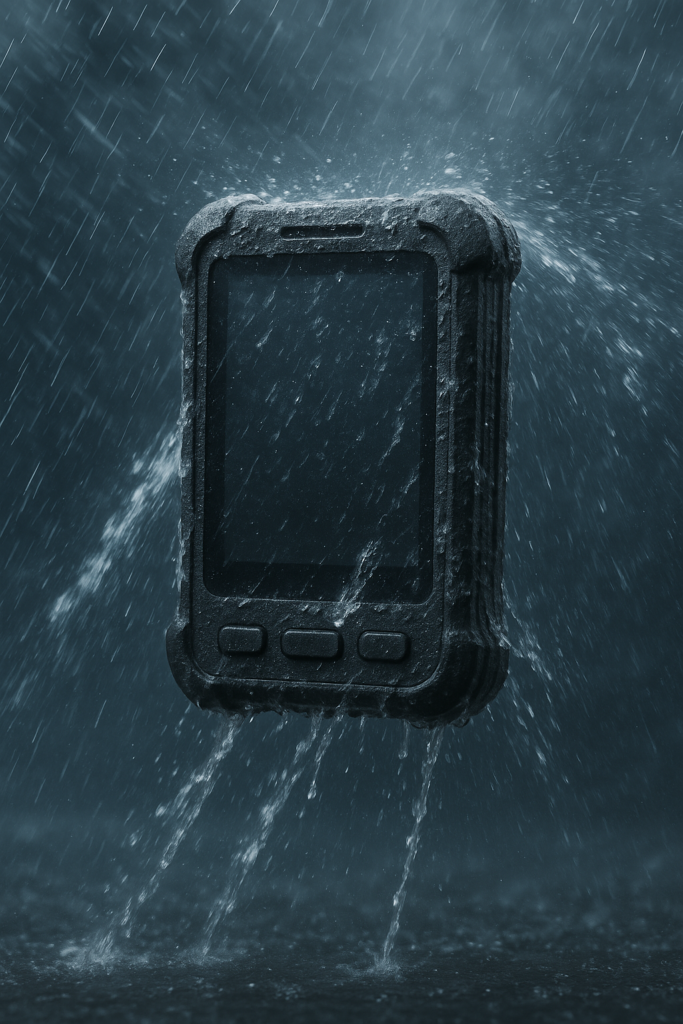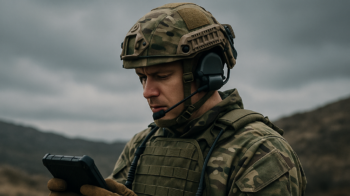MIL-STD-810 Testing: A Complete Guide for R&D Leaders

MIL-STD-810: A guide for R&D Leaders
What is MIL-STD-810?
MIL-STD-810 is a widely recognized testing standard developed by the U.S. Department of Defense to assess how well equipment performs under various environmental conditions. While its roots are in military use, it has evolved into a crucial benchmark for commercial industries aiming to ensure product durability in challenging environments.
- Originally developed for military applications
- Now applied across multiple commercial industries
- Provides test method flexibility for product-specific conditions
Latest Version: MIL-STD-810H
Released in 2019, MIL-STD-810H incorporates the latest research and real-world data to improve the accuracy and relevance of environmental testing. It also includes new procedures designed to support testing of advanced, modern technologies.
- Refined test procedures for modern equipment
- Updated environmental conditions based on recent data
- Enhanced guidance for tailoring tests to specific applications
- Improved documentation requirements
- Additional test methods for emerging technologies
Key Test Methods and Their Applications
1. Temperature and Humidity Testing
This category evaluates how products perform when exposed to extreme temperatures, rapid temperature shifts, high humidity, and changes in air pressure. These conditions simulate both natural and operational environments.
- High/low temperature extremes (-60°C to +85°C)
- Temperature shock scenarios
- Humidity resistance evaluation
- Altitude pressure testing for aerospace applications
2. Mechanical Stress Testing
Mechanical testing simulates the forces that products encounter during transportation, handling, and real-world use. It helps identify design weaknesses that may not be apparent under normal conditions.
- Vibration resistance using advanced shaker systems
- Shock impact tolerance assessment
- Drop testing protocols
- Transportation simulation
3. Environmental Exposure Testing
This testing assesses the product’s ability to withstand environmental elements such as water, salt, dust, and sunlight. It’s critical for equipment used outdoors or in harsh settings.
- Wind and rain resistance verification
- Salt fog/spray exposure analysis
- Sand and dust protection evaluation
- Solar radiation effects measurement

Industry Applications
Many sectors depend on MIL-STD-810 to validate their products’ performance in the field. It ensures that critical systems continue to function reliably even under tough environmental conditions.
- Automotive components
- Medical devices
- Industrial equipment
- Telecommunications hardware
- Aerospace systems
- Health technology products
- Defence equipment
The MIL-STD-810H Testing Process
1. Planning Phase
Thorough planning ensures that tests align with the product’s intended use. This includes selecting relevant procedures and tailoring them to real-world operating conditions.
- Requirements analysis
- Test method selection
- Custom test program development
- Documentation preparation
2. Test Execution
Testing is conducted in controlled environments to simulate real-life conditions as closely as possible. Data is gathered in real time for accuracy and efficiency.
- Controlled environment testing
- Real-time monitoring
- Data collection and analysis
- Interim reporting
3. Documentation and Certification
After testing, detailed documentation is compiled to support compliance, inform design improvements, and provide proof of performance.
- Comprehensive test reports
- Results analysis
- Recommendations for improvements
- Certification documentation
Benefits of Professional MIL-STD-810 Testing
1. Risk Mitigation
Early testing helps identify vulnerabilities before market launch, preventing failures and boosting product reliability.
- Early detection of design weaknesses
- Validation of product durability
- Prevention of field failures
- Quality assurance
2. Cost Efficiency
Investing in testing reduces costs associated with product recalls, redesigns, and customer support.
- Reduced warranty claims
- Prevention of costly recalls
- Optimized design process
- Enhanced product lifetime
3. Market Access
Compliance with MIL-STD-810 facilitates market entry, especially in sectors with strict environmental requirements.
- Meeting international standards
- Compliance with industry requirements
- Enhanced export opportunities
- Competitive advantage
4. Technical Validation
Accredited testing delivers trusted third-party verification, giving your product an edge in both commercial and regulatory landscapes.
- Third-party verification
- Accredited test results
- Scientific documentation
- Expert analysis
Choosing a Testing Partner
Selecting the right testing partner is crucial for achieving accurate, reliable results. Look for a lab with industry experience and full accreditation.
- Accreditation status
- Technical expertise
- Testing capabilities
- Industry experience
- Support services
- Reporting quality
Common Testing Challenges
1. Technical Challenges
Environmental testing can involve multiple overlapping stress factors. Accurate execution requires specialized equipment and expert interpretation.
- Complex test requirements
- Multiple environmental factors
- Specialized equipment needs
- Data interpretation
2. Practical Considerations
Challenges like time, cost, and documentation can slow down testing. Early planning and expert support help streamline the process.
- Time constraints
- Budget limitations
- Resource availability
- Documentation requirements
Conclusion
MIL-STD-810 testing represents a crucial investment in product reliability and market success. By partnering with an accredited testing facility, manufacturers can ensure their products meet the highest standards of environmental durability while optimizing development costs and time-to-market.
Ready to ensure your product’s reliability?
Contact our expert team for a consultation on MIL-STD-810 testing services. We’ll help you develop a comprehensive testing program tailored to your specific needs.
About Toptester
Toptester is an accredited testing facility specializing in reliability testing, including comprehensive MIL-STD-810 testing services. Our state-of-the-art facilities and expert team provide manufacturers with the highest quality testing services and technical support.
Our services
These articles may also interest you:
 Uutinen |
Uutinen |
MIL-STD-810 Testing: A Complete Guide for R&D Leaders
What is MIL-STD-810? MIL-STD-810 is a widely recognized testing standard developed by the U.S. Depar…
Read more >
 Uutinen |
Uutinen |
Summer Holidays behind, busy Autumn ahead
The summer holidays of Toptester staff are mostly behind us. Despite the vacations, several test pro…
Read more >
 Uutinen |
Uutinen |
Approved: Environmental proficiency testing
Toptester Ltd participated in an international proficiency testing in the field of environmental tes…
Read more >
Recent Posts
MIL-STD-810 Testing: A Complete Guide for R&D Leaders
Summer Holidays behind, busy Autumn ahead
Approved: Environmental proficiency testing
New in: NATO AQAP 2110 certificate
MIL-STD-810H testing: What to consider before outsourcing?
What size packages can I test with Toptester?
What tests are included in MIL-STD-810H testing?
